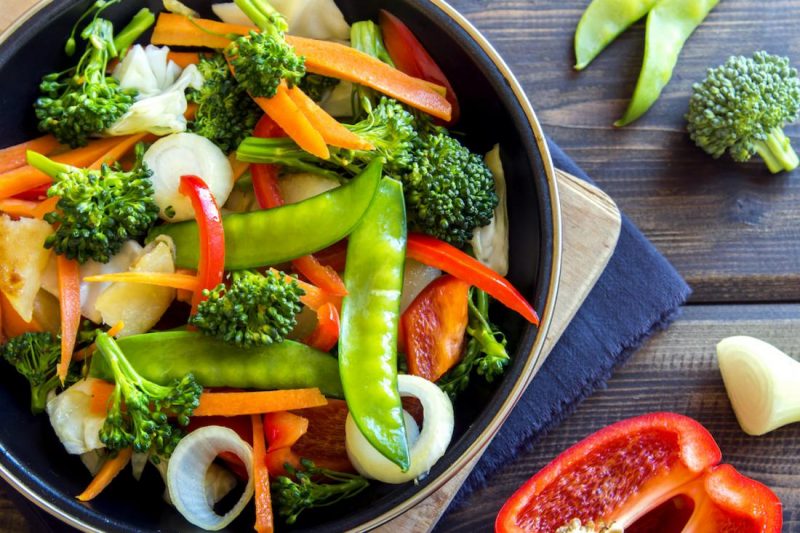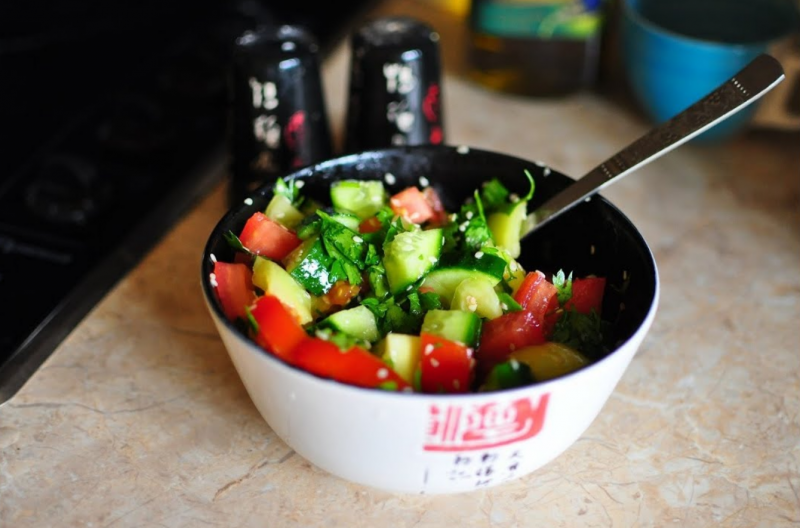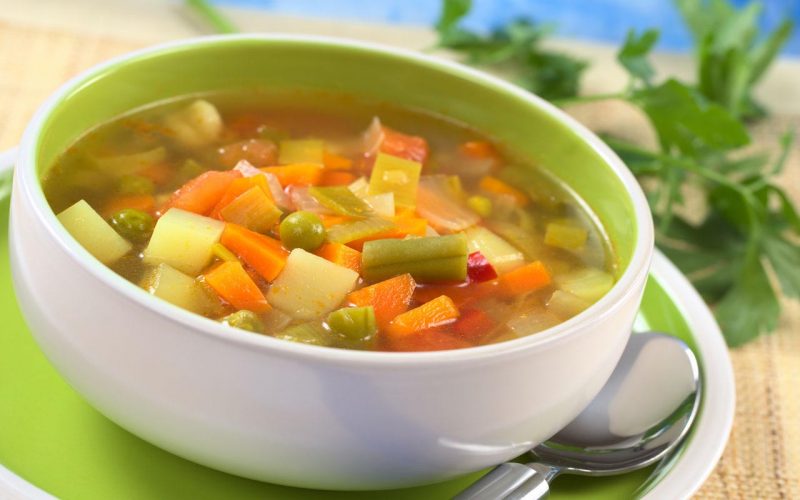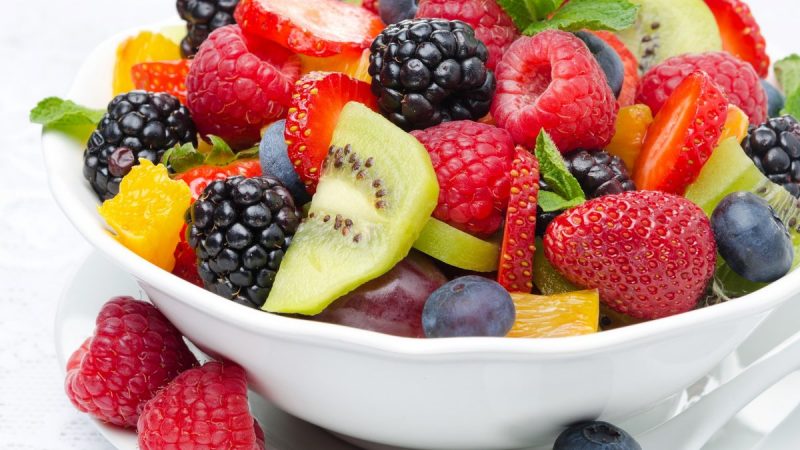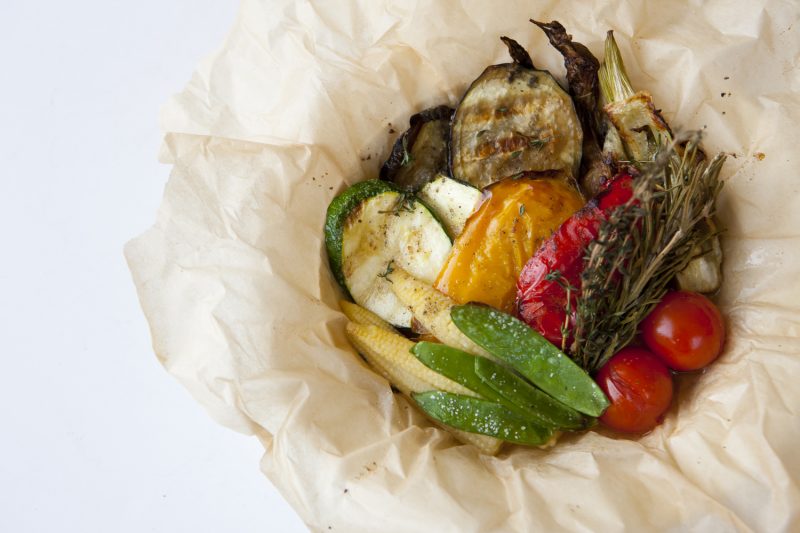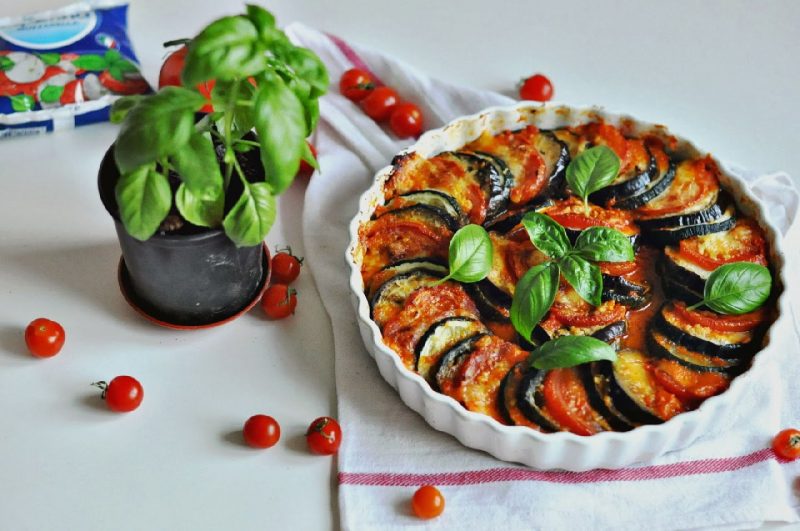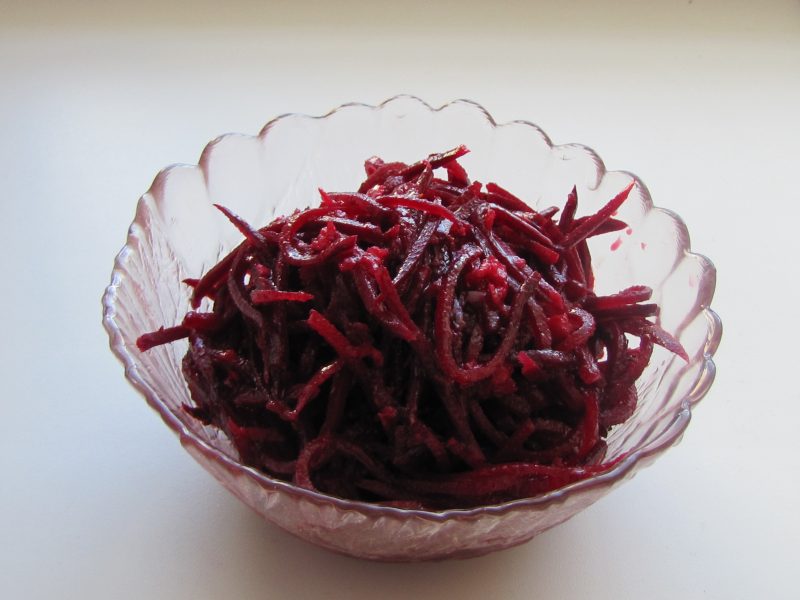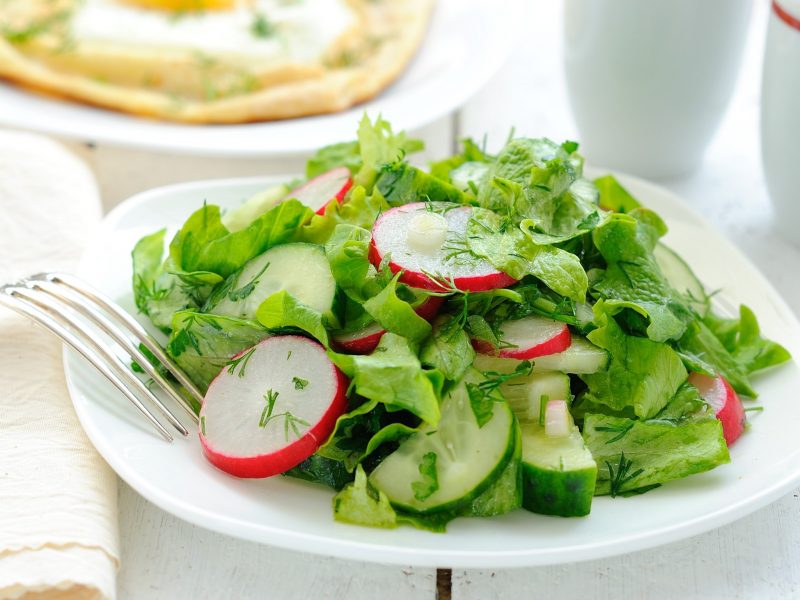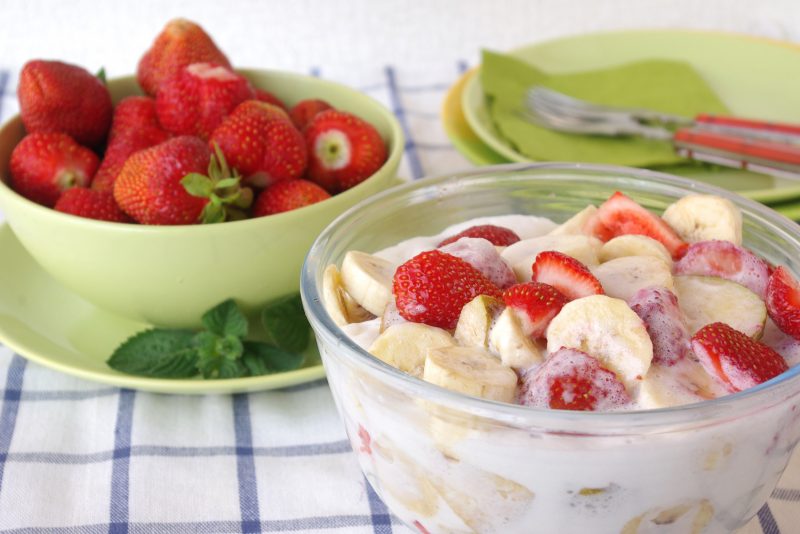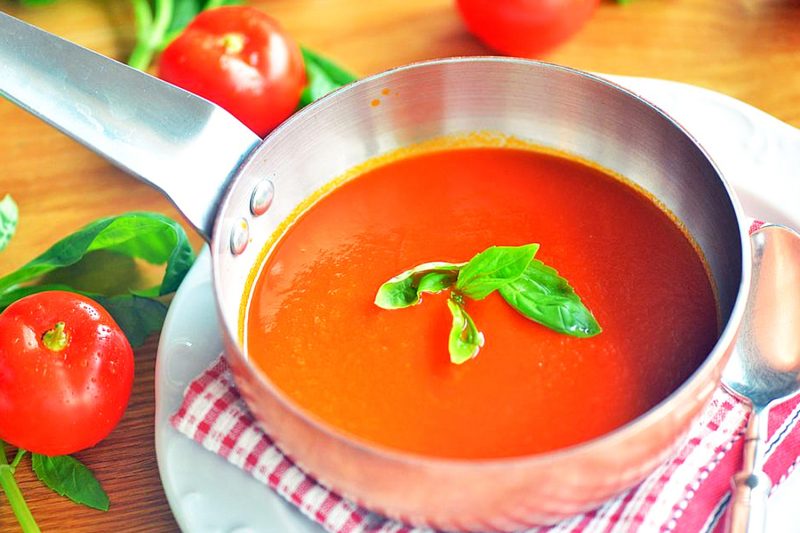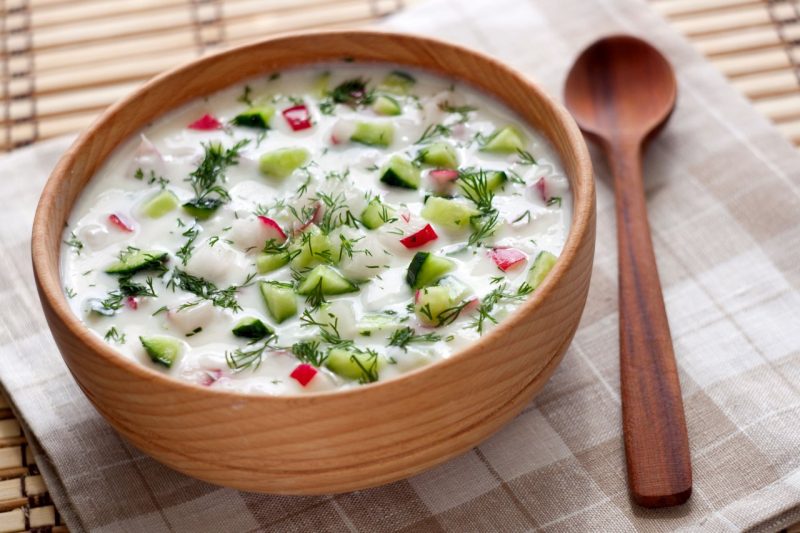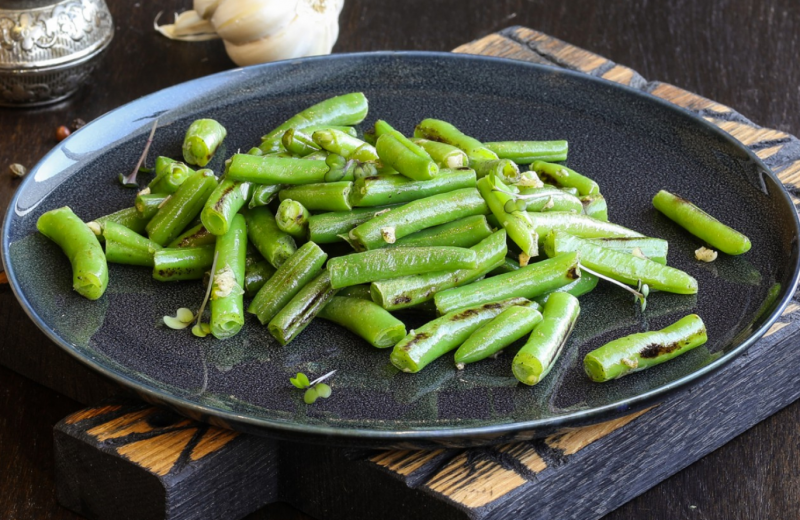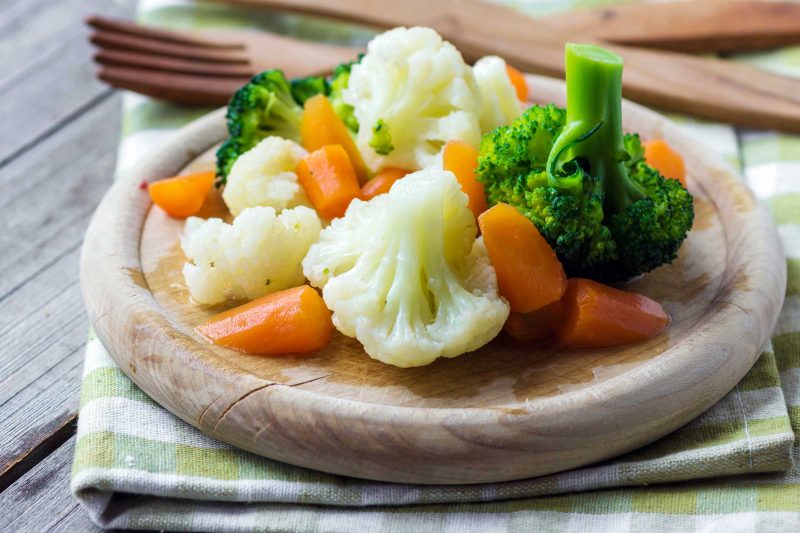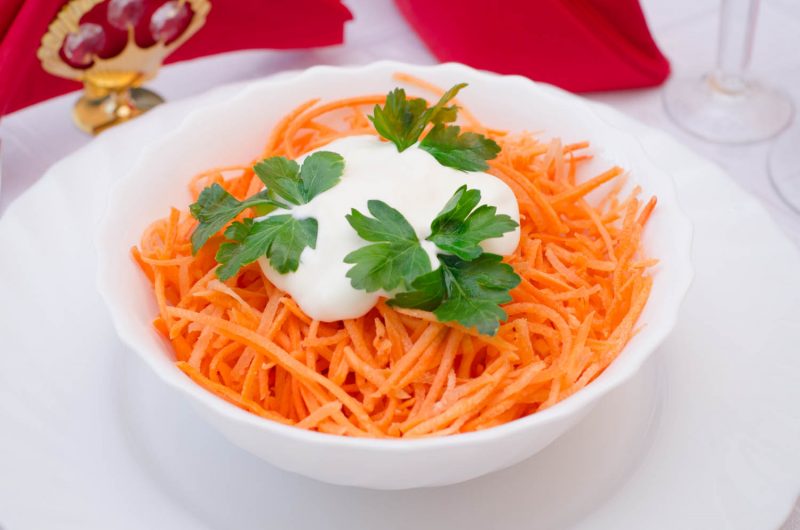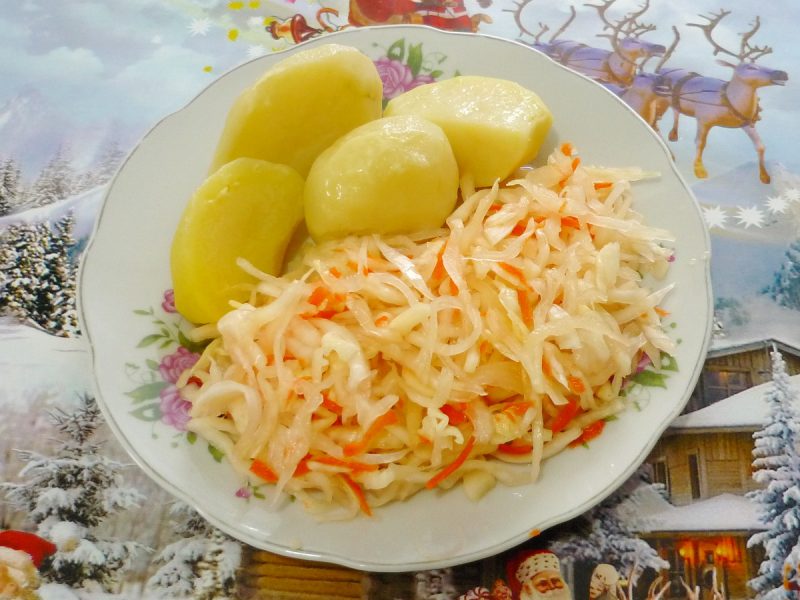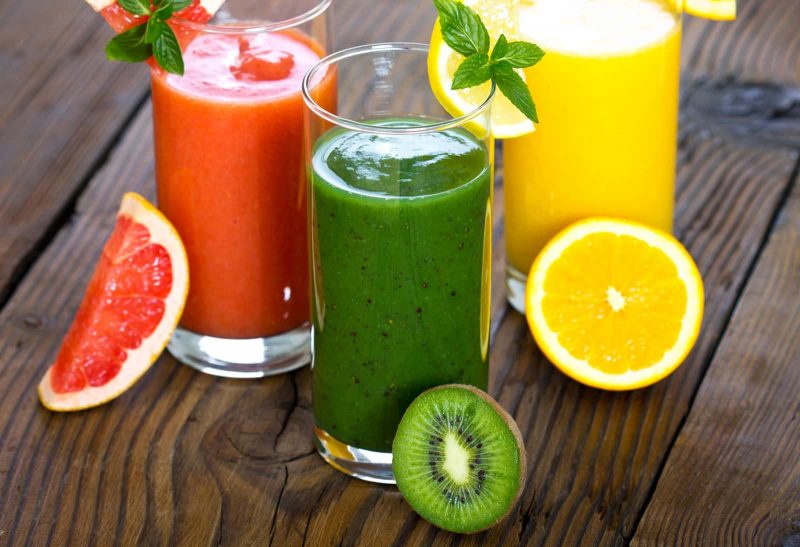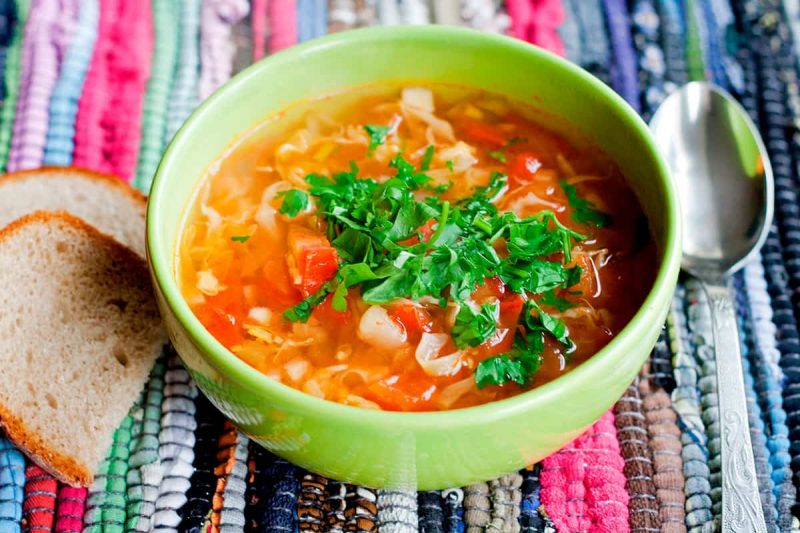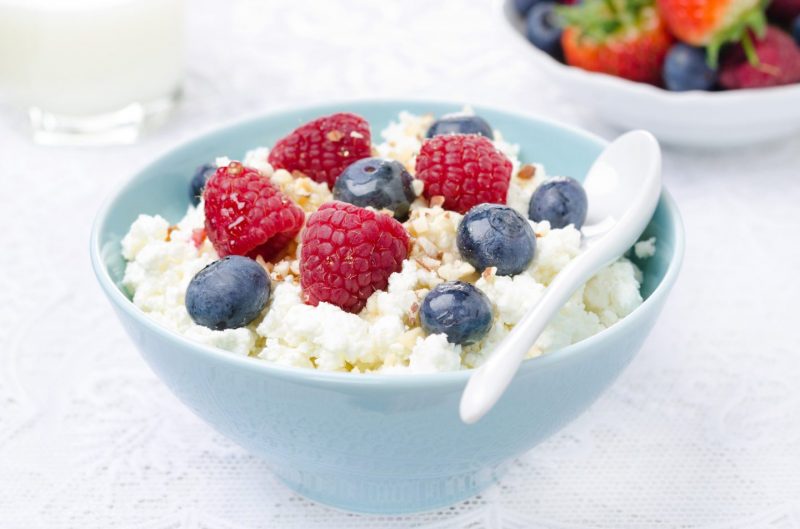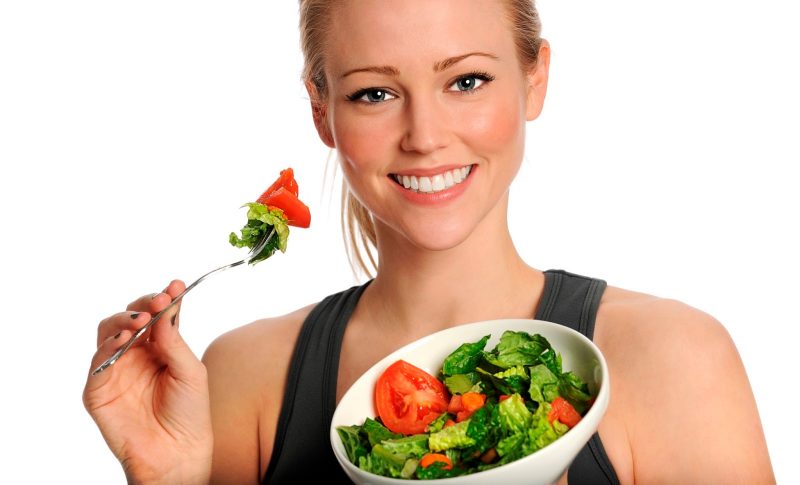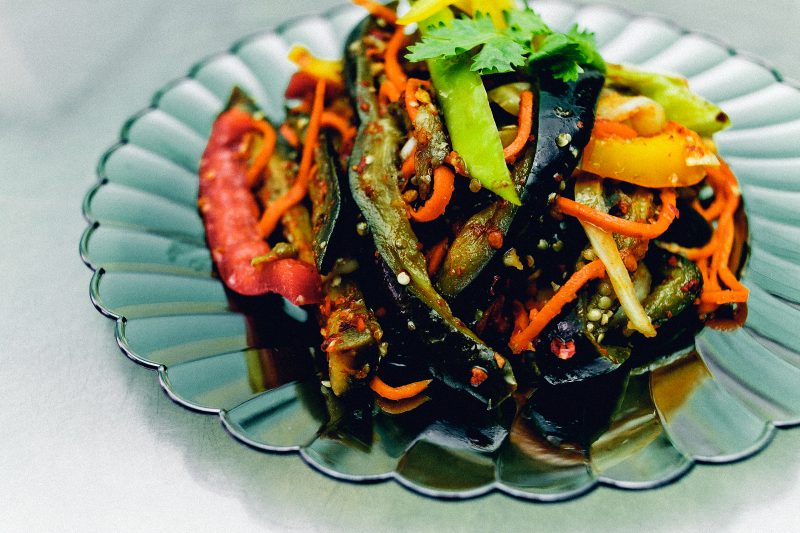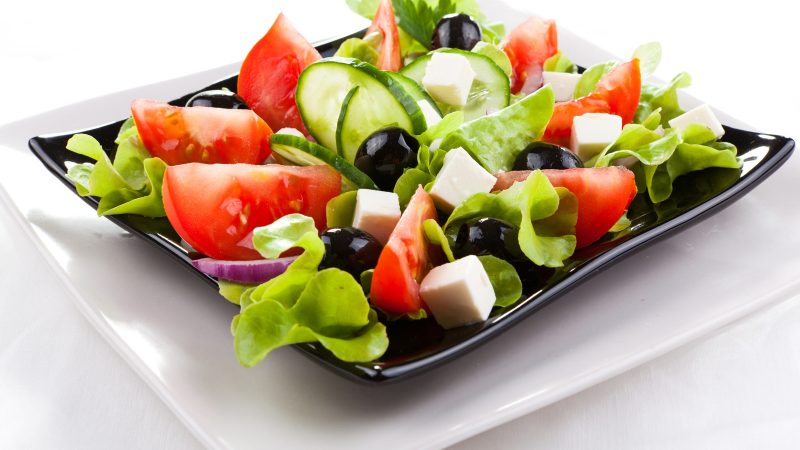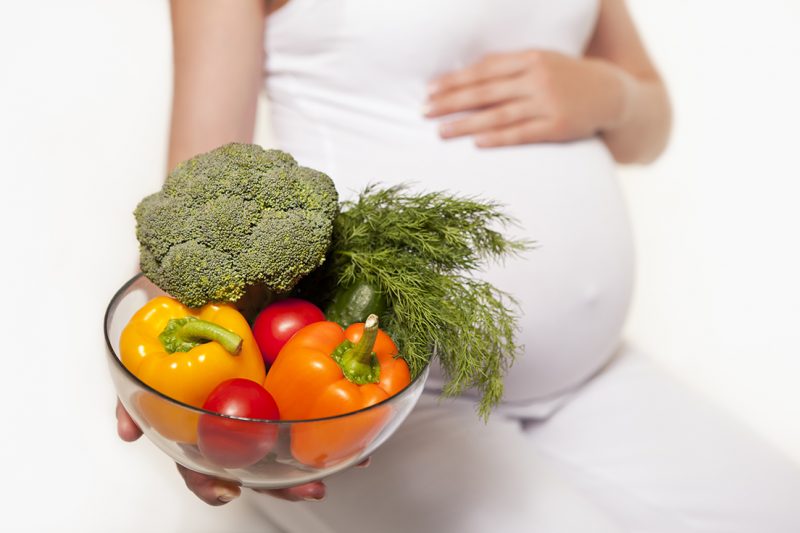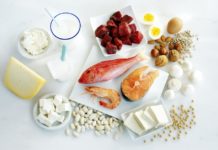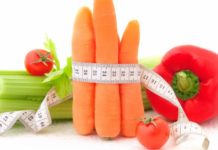Vegetable diet is one of the safest and most convenient methods of losing weight. With proper diet planning, the body will not lack in basic nutrients, and the choice of products is large enough, so the diet is easy to plan so that it will be easy and pleasant to lose weight. We will consider in detail the various aspects of this diet and share interesting recipes for every day.
Material Content:
The basic principles of a vegetable diet
On a vegetable diet, all foods are excluded from the diet, in addition to vegetables and some additional components. We consider the details below. And you also need to carefully monitor the calorie content of the diet - you should not exceed the daily rate of 1400-1500 Kcal.
The weight loss program will be especially effective if you adhere to the following rules:
- Food should be consumed fractionally, in small portions, up to 5-6 times during the day.
- The most high-calorie meals should be during breakfast and lunch (ideally - before 12:00). At this time, it is better to eat vegetables saturated with starch (such as rutabaga or pumpkin, but potatoes should be minimized or eliminated as much as possible).
- Sweet tea, coffee, milk is removed from the diet. It is allowed to drink a green drink without sugar, mineral water, juices from fruits and vegetables.
- The latter is recommended to be consumed either raw as salads, or steamed or boiled. Do not abuse fried vegetables and fat dressings.
It is very important to plan the diet in such a way as not to exceed the recommended calorie content (the permissible error can be about 200 kcal per day), but at the same time it cannot be greatly reduced - this is fraught with unpleasant consequences for the body.
Pros and cons of this method of weight loss
The obvious advantages of this method of reducing excess weight include the following indicators:
- Diet is easy to follow without its breakdowns. A wide range of permitted products allows you to cook a variety of dishes, and with proper planning of the diet, portions will be quite satisfying.
- Vegetables are high in vitamins, minerals and other beneficial substances, so their use will be very beneficial for health.
- This diet does not imply a critical reduction in the calorie content of the diet or the exclusion of necessary products from it for a very long time, so weight loss occurs without unpleasant consequences.
- In two weeks you can lose up to 6 kg, which is a very significant result.
- The program is as affordable as possible - most vegetables can be purchased at any supermarket or grown independently in a personal plot.
- Diet favorably affects the health of people suffering from hypertension, helping to normalize blood pressure.
The disadvantages include the following factors:
- Even though the diet of the diet involves the use of products with a high content of nutrients, something the body will still receive less: animal protein, fats, etc. For this reason, the duration of the vegetable diet is limited to two weeks.
- The exclusion from the menu of high-calorie foods can provoke a quick onset of hunger, which is uncomfortable in the initial stages. You can get rid of this by supplementing the daily meal schedule with light snacks (of course, from permitted foods).
- A large amount of fiber can cause problems with stools, if you have not followed a vegetarian diet.
If you properly follow the rules of the diet, do not reduce the calorie content of the diet, diversify the diet and adhere to the recommended terms, then a positive effect can be achieved without harm to health. You will also need to be careful and reduce physical activity: due to the low calorie intake, active training can provoke severe exhaustion.
Recommended and Prohibited Products
In the classic version, only vegetables remain in the daily diet during the vegetable diet - carrots, bell peppers, zucchini and eggplant, tomatoes, broccoli and cauliflower. It is recommended to pay attention to fresh herbs and white vegetables. The peculiarity of these products is that they have a negative calorie content, more calories are spent on their digestion than they are contained in the products themselves.
The following list is excluded:
- any cereals and cereals;
- fatty meat and fish;
- high starch vegetables (potatoes, corn). They can be introduced into the diet, but in very small portions;
- any bakery products;
- factory juices containing sugar;
- sweet crystals themselves;
- high fat dairy products;
- mayonnaise, ketchup and sauces based on them.
Given that the main recommended dish is a variety of salads, you need to remember that not all dressings are suitable for them. It is best to use vegetable oil in limited quantities, sauces based on low-fat sour cream or light yogurt, various spices.
Detailed menu for 7 and 14 days
Here are some examples of a vegetable diet for a week or two. The menus can be varied using your favorite vegetable recipes. If you follow a protein-vegetable diet, add low-fat meat to such side dishes, and eat nuts for an afternoon snack and snack.
Monday
Breakfast:
- 1 week - a salad of fresh vegetables with sesame seeds and dressing from olive oil, freshly squeezed juice;
- 2 week - cabbage salad with apple, low-fat kefir.
Dinner:
- 1 week - soup of fresh vegetables, vegetable stew, dried fruit compote without sugar;
- 2 week - Greek salad with tofu, stewed bell peppers with herbs.
Snack:
- 1 week - an apple with the addition of a teaspoon of natural honey, juice or fruit drink;
- 2 week - fruit salad.
Dinner:
- 1 week - white cabbage bigos, low-fat cottage cheese;
- 2 week - vegetables baked in foil.
Tuesday
Breakfast:
- 1 week - baked apples with cinnamon, cowberry juice;
- 2 week - fresh berries, low-fat kefir.
Dinner:
- 1 week - baked potatoes, vegetable broth with greens;
- 2 week - ratatouille, lean cabbage soup.
Snack:
- 1 week - salad of grated beets and garlic;
- 2 week - fresh fruits.
Dinner:
- 1 week - stuffed tomatoes;
- 2 week - sauerkraut salad with onions and sunflower oil.
Wednesday
Breakfast:
- 1 week - salad of fresh radish and cucumbers, fruit drinks;
- 2 week - pancakes from zucchini, green tea.
Dinner:
- 1 week - stewed eggplant with tomato paste and garlic;
- 2 week - vegetarian borsch, cucumber and tomato salad.
Snack:
- 1 week - nuts, citrus juice;
- 2 week - fresh fruits.
Dinner:
- 1 week - baked zucchini stuffed with vegetables;
- 2 week - stewed cabbage, carrot straws.
Thursday
Breakfast:
- 1 week - fresh fruits and berries, low fat kefir;
- 2 week - fruit salad with yogurt dressing.
Dinner:
- 1 week - tomato puree soup with basil, a salad of bell pepper and herbs;
- 2 week - stewed pumpkin with honey and cinnamon, vegetable juice.
Snack:
- 1 week - baked apples with honey;
- 2 week - fresh berries, natural yogurt.
Dinner:
- 1 week - vegetable smoothie, fresh cabbage salad with carrots;
- 2 week - vegetarian okroshka on low-fat kefir.
Friday
Breakfast:
- 1 week - grated radish with olive oil, fruit drink;
- 2 week - low-fat cottage cheese, steamed zucchini.
Dinner:
- 1 week - green beans with rosemary and garlic;
- 2 week - gazpacho, bell pepper and cucumber salad.
Snack:
- 1 week - fresh apples and pears;
- 2 week - kefir, dried fruits.
Dinner:
- 1 week - steamed vegetable mixture, ayran;
- 2 week - boiled cauliflower with greens and low-fat cheese.
Saturday
Breakfast:
- 1 week - a salad of fresh vegetables with olive oil, fruit drink;
- 2 week - vegetarian stuffed cabbage stuffed with stewed vegetables.
Dinner:
- 1 week - broccoli puree soup, fresh carrots;
- 2 week - Korean eggplant hey, sugar-free green tea.
Snack:
- 1 week - a salad of fresh carrots;
- 2 week - salad of cucumbers, bell peppers and carrots with sesame oil.
Dinner:
- 1 week - boiled potatoes, sauerkraut;
- 2 week - vegetable casserole with tomato sauce and Provencal herbs.
Sunday
Breakfast:
- 1 week - fruit smoothie, canned pineapple;
- 2 week - fresh berries, mineral water with lemon juice and fresh mint.
Dinner:
- 1 week - Bonn vegetable soup;
- 2 week - stewed cauliflower with green peas and tomato paste.
Snack:
- 1 week - soft fat-free cottage cheese with fresh berries, dried fruit compote;
- 2 week - fresh cabbage salad with carrots and apple.
Dinner:
- 1 week - bell pepper stuffed with a vegetable mixture with tomato paste;
- 2 week - radish salad with lemon juice and cucumber, walnuts.
Vegetable Diet Options
For fruit and vegetable diets, the menu includes fruits. They can be consumed with vegetables, or alternating between fruit and vegetable days. Fresh fruits can be consumed any, but the number of bananas and grapes should be limited.
It is best to eat fresh fruits, without heat treatment, including in the form of salads.
There is an easier option for the body to perceive - a protein-vegetable diet. You can add low-fat varieties of meat and poultry, nuts, low-fat cottage cheese to the menu. In this case, the basis of nutrition should still be vegetables (up to 70% of the diet).In this version of the diet, nutrition is more balanced, the program can be extended up to a month, but the rule with limiting physical activity is still necessary.
Vegetable Recipes
From vegetables you can cook a large number of interesting dishes that can significantly diversify the daily diet. Here are some original recipes from vegetables for weight loss, which are ideal for use on this diet.
Au eggplant
A national Korean dish that improves metabolism and is rich in vitamins.
We will need:
- eggplant - 200 g;
- bell pepper - 2 pcs.;
- red onion - 1 pc.;
- garlic - 2-3 cloves;
- vegetable oil - 2 tbsp. l .;
- carrots - 1 pc.;
- ground hot chili pepper - ¼ tsp;
- soy sauce - 50 ml.
How to cook:
- Cut the eggplants into small pieces or strips, put in a pan with a thick bottom, slightly oiled, add a quarter glass of water, simmer under the lid until soft.
- Chop the onion, pepper and carrot into thin strips, attach to the eggplant. Reduce heat to low, simmer vegetables until cooked.
- Combine oil, soy sauce, hot pepper and squeezed garlic. Pour vegetables with the resulting mixture, mix, heat for another 3-5 minutes over low heat.
Serve with fresh herbs, cilantro, parsley or celery.
Gazpacho
Cold Italian soup will appeal to those who follow a diet in the summer.
Ingredients:
- tomatoes - 300 g;
- onions - 1 pc.;
- bell pepper - 2 pcs.;
- fresh cucumber - 1-2 pcs.;
- olive oil - 3 tbsp. l .;
- lemon juice - 2 tsp.
Cooking:
- Cut the tomatoes into small pieces, the onion into strips, and chop the peeled cucumbers in circles.
- Place the vegetables in a blender and chop until smooth.
- Season with lemon juice and olive oil.
Serve gazpacho with fresh herbs. Garnish with fresh vegetables and basil.
Greek Tofu Salad
On a vegetable diet, it is not recommended to use feta cheese or fatty cheeses, but soybeans tofu is good. Try this light and low-calorie version of Greek salad.
Ingredients:
- tofu - 200 g;
- bell pepper fruits - 2 pcs.;
- cherry tomatoes - 7-10 pcs.;
- red onion - 1 pc.;
- oregano or a mixture of Provencal herbs - ½ tsp;
- olives - 1 can;
- olive oil - 2 tbsp. l
Cooking:
- Dice the tofu, sprinkle with a mixture of dry herbs, add a spoonful of oil and leave for a while.
- Cut the vegetables into medium-sized pieces of about 1.5 cm, mix. You can put the whole olives or split them in half, chop the cherry into halves.
- Mix the composition with tofu and season with oil, salt to taste. You can add a tablespoon of lemon juice.
Tofu well absorbs the aroma of any spices and sauces, so you can pickle it longer in a mixture of your favorite seasonings.
Way out of diet
With prolonged use of vegetables, the digestive system is rebuilt, so you can not immediately switch to the usual diet. It is necessary to adhere to this method of getting out of the diet in order to reduce the load on the digestive tract and avoid unpleasant consequences.
The basic principles of getting out of a diet:
The first 2-3 days after the end of the program, carbohydrates and vegetable protein are introduced. You can include liquid cereals, cereal bread, and legumes in the menu.
Another 4 days in the diet you need to gradually add animal protein - start with soft-boiled eggs, lean meat, cottage cheese. First in small quantities, then portions can be increased. The main thing is do not do it abruptly.
By the end of the week, begin to gradually add fried food and animal fats, gradually moving to the usual serving size.
In order to consolidate the effect of the diet, it is recommended for another two weeks not to eat wheat flour products, fatty foods and sweets.
To whom such a diet is contraindicated
Any diet is stress for the body.In some cases, it can harm, so take care of your health condition in advance.
In no case should you "sit down" on a similar way of eating during periods of exacerbation of chronic gastritis, as well as with stomach ulcers in any condition.
Pregnant and lactating women need a complete and balanced diet, so during this period it is better to refrain from diets.
Care should be taken to make the menu for allergy sufferers, as many vegetables and fruits, especially citruses, tomatoes and kiwi, can cause allergies. If your body is susceptible to such foods, it is better to choose a more sparing regimen for yourself.
Exacerbation of kidney diseases is also a contraindication to a vegetable diet.



